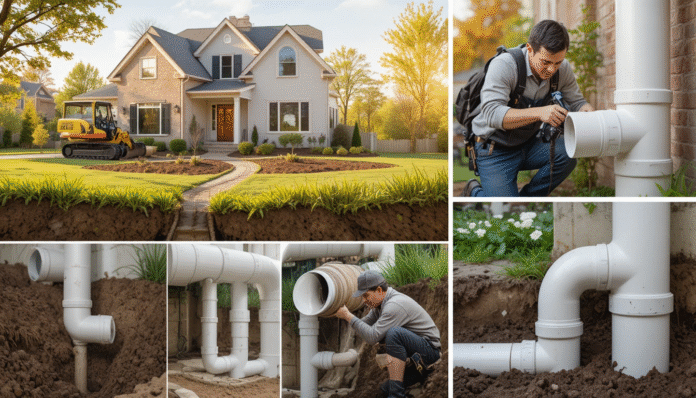Table of Contents
Sewer Pipe Replacement
Sewer pipe replacement can be a daunting task for homeowners, often involving significant time, effort, and expense. Understanding the signs indicating a need for replacement, the available materials, the replacement process, potential disruptions, and long-term solutions can empower homeowners to make informed decisions.
Understanding when, why, and how to replace them can save homeowners from thousands in repair costs and long-term structural damage. This comprehensive guide walks you through the signs of sewer failure, materials used for replacements, the replacement process, potential disruptions, and the best long-term solutions to keep your home’s plumbing in top condition.
| Category | Key Details |
| Common Warning Signs | Slow drains, sewage odors, mold growth, soggy lawn patches, foundation cracks, rising water bills |
| Inspection Methods | Camera inspection, hydrostatic pressure testing, and smoke testing |
| Popular Materials | PVC (75–100 yrs), HDPE (80–100 yrs), Cast Iron (50–75 yrs), Clay (50–60 yrs), Orangeburg (30–50 yrs) |
| Replacement Methods | Traditional trenching, trenchless pipe bursting, cured-in-place pipe lining (CIPP) |
| Average Cost Range | $4,000 – $15,000 (standard), $6,000 – $20,000 (trenchless), $10,000+ (extensive excavation) |
| Replacement Timeline | 1–7 days (typical), up to 2 weeks for complex projects |
| Common Disruptions | Temporary water shutoff, yard excavation, noise, and landscape disturbance |
| Maintenance Tips | Inspect every 2–3 years, prevent root intrusion, avoid grease/wipes, and install a backflow preventer. |
| Best Long-Term Materials | PVC or HDPE — durable, corrosion-resistant, and environmentally friendly |
| Environmental Benefits | Prevents leaks, protects groundwater, improves sanitation, supports sustainable systems |
Recognizing the Signs of Sewer Pipe Failure
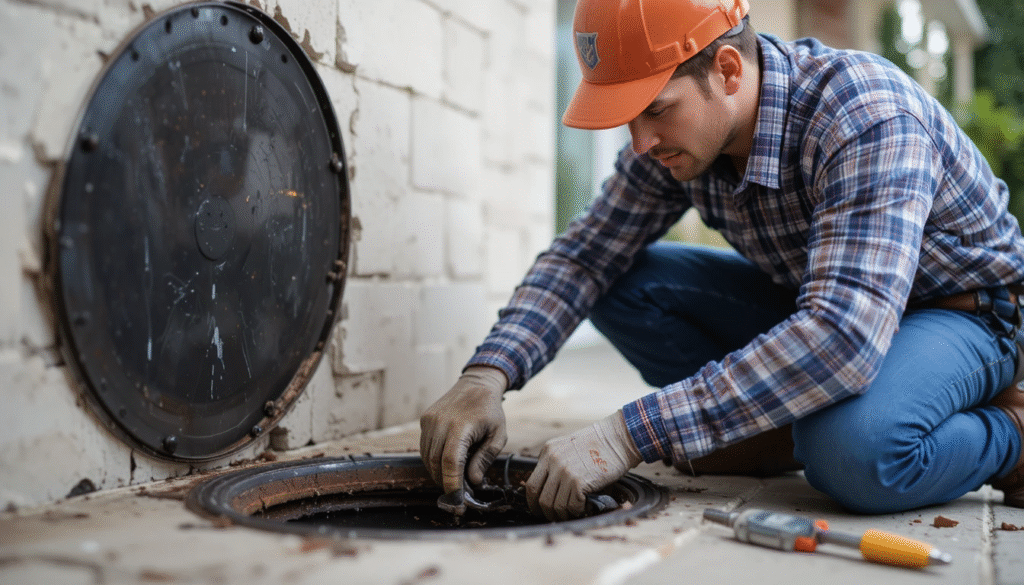
Before replacing your sewer pipes, it’s essential to identify the signs that indicate they may need attention. Ignoring these symptoms can lead to more severe problems and costly repairs.
1. Frequent Clogs
If you find yourself dealing with frequent clogs in your sinks, toilets, or drains, it could be a sign of a failing sewer pipe. While occasional clogs are everyday issues, persistent issues often indicate underlying problems, such as tree root intrusion or deteriorating pipe conditions.
2. Slow Drains
Slow-draining fixtures can indicate blockages or buildup in the sewer line. If multiple drains in your home are slow, it may signify a more significant issue with the main sewer line.
3. Foul Odors
A noticeable sewage smell in or around your home can indicate a leak or break in the sewer line. This is not just unpleasant; it can also pose health risks due to exposure to harmful bacteria.
4. Water Damage
Water stains on walls, ceilings, or floors can suggest a leaking sewer pipe. If you notice damp spots or mold growth, it’s crucial to investigate further, as this can lead to significant structural damage.
5. Lush Patches in the Yard
If certain areas of your lawn are unusually green or lush compared to the rest, it might be due to leaking sewage fertilizing the soil. This could indicate a break in the sewer pipe beneath your yard.
6. Foundation Cracks
In severe cases, sewer line issues can lead to foundation problems. If you notice cracks in your foundation or shifting soil, it may be linked to sewer pipe failure.
Choosing the Right Materials for Replacement
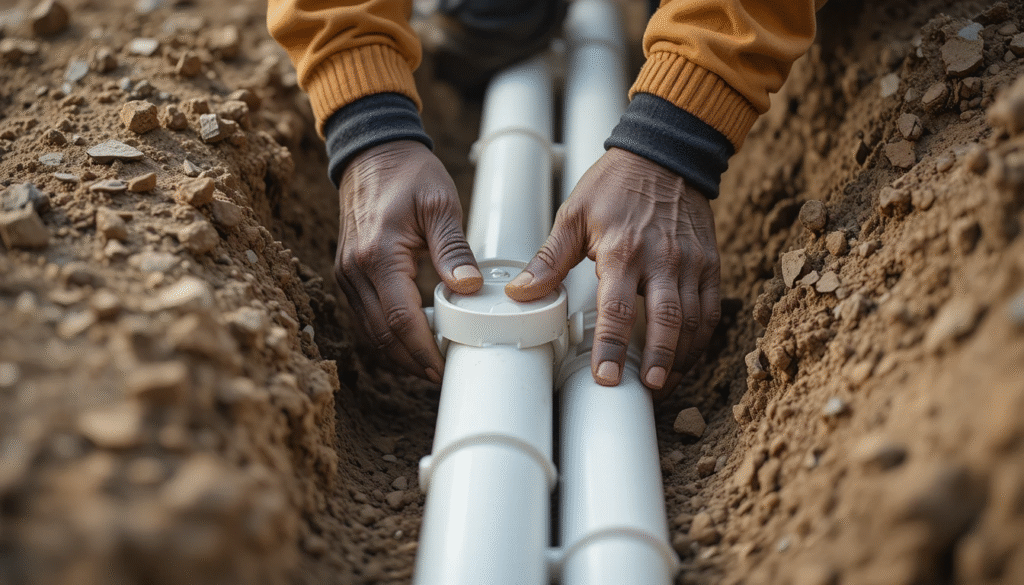
When replacing sewer pipes, choosing the right materials is crucial for long-term durability and performance. Several options are available, each with its advantages and disadvantages:
1. PVC (Polyvinyl Chloride)
- Pros
- Lightweight and easy to install
- Resistant to corrosion
- Cost-effective
- Long lifespan of 50 to 100 years
- Cons
- Can become brittle over time, especially in extreme temperatures
- Not suitable for all types of soil conditions
2. ABS (Acrylonitrile Butadiene Styrene)
- Pros
- Strong and impact-resistant
- Can be used in colder climates without becoming brittle
- Easy to install
- Lifespan of 50 to 80 years
- Cons
- Typically more expensive than PVC
- May not be as readily available
3. Cast Iron
- Pros
- Extremely durable with a lifespan of over 100 years
- Provides excellent sound insulation, reducing noise from wastewater flow
- Cons
- Heavy and expensive, making installation more labor-intensive
- Prone to rust and corrosion over time
4. Clay
- Pros
- Resistant to corrosion and can last over 100 years
- Environmentally friendly
- Can handle high temperatures
- Cons
- Can crack under pressure
- May not be suitable for areas with shifting soil
- More challenging to install
Comparison of Sewer Pipe Materials
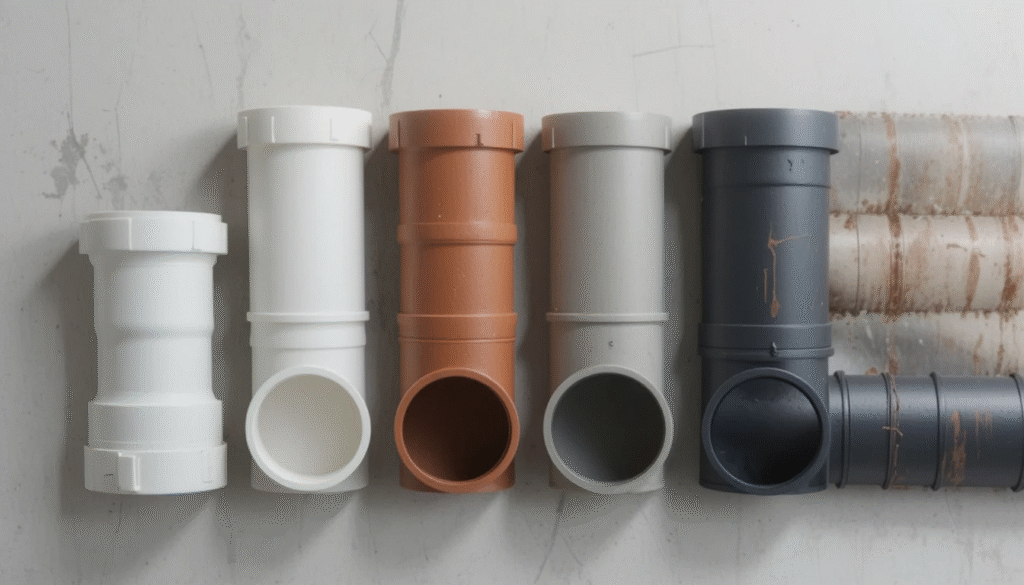
| Material | Lifespan | Cost | Corrosion Resistance | Installation Difficulty |
| PVC | 50-100 years | Low | High | Easy |
| ABS | 50-80 years | Moderate | High | Easy |
| Cast Iron | 100+ years | High | Low | Moderate |
| Clay | 100+ years | Moderate | High | Difficult |
The Sewer Pipe Replacement Process
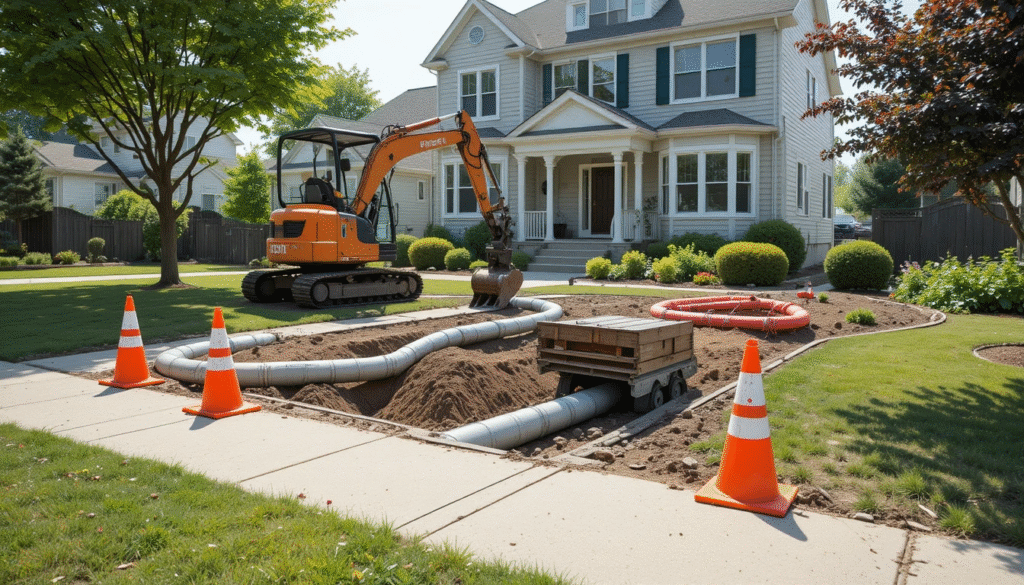
Understanding the replacement process can help you prepare for what to expect and minimize disruptions to your daily routine.
1. Assessment and Inspection
The first step is to assess the current condition of your sewer pipes. A professional plumber will typically conduct a video inspection to identify the extent of the damage and determine the best course of action.
2. Obtaining Permits
Before any work begins, you may need to obtain permits from your local municipality. This step ensures that the replacement meets local building codes and regulations.
3. Excavation
For traditional replacement methods, excavation is necessary to access the old pipes. This may involve digging up your yard or driveway, which can be disruptive.
4. Pipe Removal
Once exposed, the old pipes will be removed. Depending on the condition and material, this may require specialized tools and techniques.
5. Installation of New Pipes
After removing the old pipes, the new sewer pipes will be installed. This process involves connecting the pipes to the existing plumbing and ensuring proper alignment and slope for optimal flow.
6. Backfilling and Restoration
Once the new pipes are in place, the excavated area will be backfilled with soil. Restoration of the yard or driveway may involve reseeding grass or repaving.
7. Final Inspection
After installation is complete, a final inspection may be required to ensure everything meets local codes and functions adequately.
Managing Disruption During Replacement
- If you suspect your sewer pipe may need replacement, consider having it inspected before issues arise. This proactive approach can help you schedule the work at a convenient time.
- Stay in close communication with your contractor throughout the process. They should provide you with a clear timeline and inform you of any unexpected delays.
- Clear the areas around the worksite to make it easier for workers to access the pipes. Consider using temporary bathroom facilities if your plumbing will be out of service.
- In some cases, it may be necessary to stay elsewhere during the replacement process, especially if significant excavation is required. Having a backup plan can ease stress.
Long-Term Solutions for Sewer Pipe Maintenance
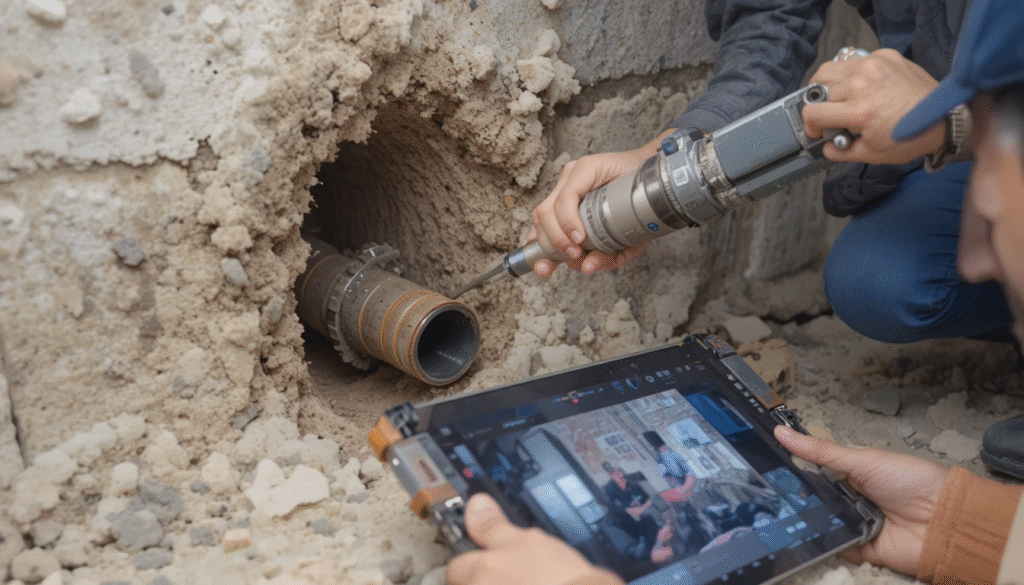
After replacing your sewer pipes, implementing long-term maintenance strategies can help prevent future issues.
1. Regular Inspections
Schedule routine inspections every few years to identify potential problems early. A professional plumber can use video technology to assess the condition of your pipes without extensive excavation.
2. Avoid Flushing Non-Disposables
Educate your household about what can and cannot be flushed down toilets or drains. Items like wipes, feminine hygiene products, and grease can cause blockages and damage the sewer system.
3. Landscaping Considerations
Be mindful of tree placement and landscaping choices, as roots can invade sewer lines over time. Consider planting trees with shallow root systems away from sewer lines.
4. Consider Trenchless Technology
If you need future repairs, consider trenchless technology for any necessary pipe work. This method involves minimal excavation and can save time and money.
5. Maintain Clean Drains
Regularly clean your drains to prevent buildup and clogs. Using enzyme-based cleaners can help break down organic materials without harming your plumbing.
Conclusion
Sewer pipe replacement is a significant undertaking that requires careful consideration and planning. By recognizing the signs of sewer pipe failure, choosing the right materials, understanding the replacement process, and managing disruption effectively, homeowners can navigate this complex project with confidence.
Implementing long-term maintenance strategies will help ensure the longevity of your new sewer pipes, ultimately saving you time, money, and stress. With the proper preparation, you can protect your home’s plumbing system and maintain a healthy living environment for years to come.
Want to know about Actual Cost of Metal Roof Installation: Material Types, Roof Size Factors, Labor Rates Check out our Home Improvement category.
FAQs
Look for signs such as frequent clogs, slow drains, foul odors, water damage, lush patches in your yard, and foundation cracks.
Common materials include PVC, ABS, cast Iron, and Clay, each with its advantages and disadvantages.
The duration can vary depending on the extent of the damage and the method used, but it typically takes a few days to a week.
Costs can vary widely depending on materials, labor, and local regulations, but homeowners can expect to spend between $1,500 and $15,000.














